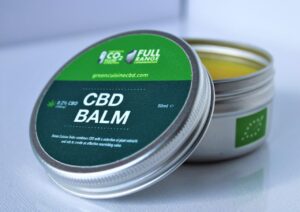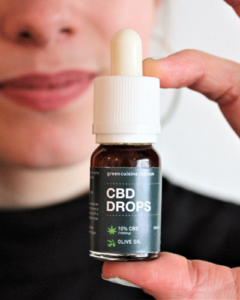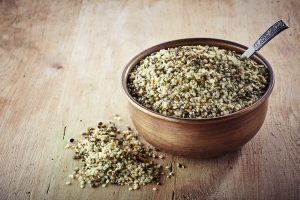The Ultimate CBD Guide for Beginners
Cannabidiol (CBD) is one of the 421 chemicals in the cannabis plant, and the primary medicinal component found in the leaves and flowers.
CBD is the most abundant of the 117 different cannabinoids, with tetrahydrocannabinol (THC) coming in second. The bulk of the remaining cannabinoid profile includes other cannabinoids such as CBC (cannabichromene), CBG (cannabigerol), and CBN (cannabinol), all offering unique effects on the body.
Used for centuries to treat medical conditions, the benefits of CBD come mostly from its interaction with the endocannabinoid system. This special guide is going to outline the history of CBD, how it works, and ways to take it for treating a wide variety of conditions.

Content article
How CBD Works: The Endocannabinoid System
CBD Uses: Conditions Treated with CBD
How CBD Works: Interaction with the Endocannabinoid
CBD has been promoted as an effective treatment for a wide variety of conditions. Understanding how it works within the body is fundamental to determining if it is appropriate for your particular condition.

Nervous System Fundamentals
First off, let’s go over some basic ideas in physiology to increase our understanding of what we are about to learn.
A nervous system is a network where messages are transmitted all over the body.
The central nervous system is like the “control center”, and includes the brain and spinal cord.
The peripheral nervous system branches out from there and extends to other parts of the body including muscles and organs.
Neurons are nerve cells that form the building blocks of the nervous system.
Neurotransmitters “transmit” messages from the neurons to the entire body.
Receptors are where neurotransmitters go to “deliver” their message.
The Endocannabinoid System
So far we learned about the information network that composes our nervous system, composed of two main parts: central and peripheral.
You can picture the central nervous system as the control center that communicates with the rest of the body.
The endocannabinoid system can be thought of as one of the many networks within the entire nervous system that has a “station” at the “control center” within the central nervous system that interacts with various parts of the body through the peripheral nervous system.
Remember the neurotransmitters mentioned earlier? They are the messengers that fly around the system taking messages to the receptors.
Endocannabinoids are the specialized neurotransmitters of the endocannabinoid system that interact with their special cannabinoid receptors waiting to receive their message.
Endo means “inside”, so endocannabinoids refer to naturally-created cannabinoids within our bodies.

“Phyto” means “plant” (φυτό) in Greek, so Phytocannabinoids are exterior cannabinoids we take in from the cannabis plant to interact with the endocannabinoid system.
While still under extensive research, the endocannabinoid system is widely thought to be involved in regulating many physiological and cognitive processes that can affect pain-sensation, feelings of wellbeing, mood and memory.
The mechanism of CBD works in several ways, including:
1. Increased GABA Activity with CBD
GABA (gamma-aminobutyric acid) is an important neurotransmitter that slows down the nervous system and promotes relaxation. Following periods of extreme stress, GABA helps to reverse the process by slowing the heart rate, reducing blood pressure, and calming the mind in preparation for sleep.
Anxiety attacks, insomnia, digestive problems and lowered immunity can all be attributed to GABA dysfunction.
While CBD doesn’t directly activate GABA receptors, it can act like a modulator that promotes binding of GABA to bind to receptors, resulting in relaxation. The effects extend to reducing other issues resulting from the hyperstimulation of the brain that can include anxiety, panic attacks, PTSD and insomnia.
Many prescription and anti-anxiety medications work in a similar manner like Xanax, Valium and Klonopin. The difference with CBD is that its not considered to be addictive and will not produce withdrawal symptoms, even after prolonged use.
2. CBD Increases Endocannabinoid Levels
Fatty acid amide hydrolase is an enzyme that breaks down endocannabinoids inside our cells. CBD works in opposition to this, allowing our bodies to produce endocannabinoids.
By facilitating the body to produce endocannabinoids, CBD is thought to provide a “balancing mechanism” that achieves homeostasis.

3. Vanilloid Pain Receptor Activation
TRPV1, also known as the “transient receptor potential cation channel subfamily V” or the Vanilloid (due to similar effects to the vanilla bean) is a receptor that can be activated to mediate the perception of pain, body temperature and inflammation.
CBD Uses: Conditions Treated with CBD
CBD has been suggested as a treatment for a wide variety of conditions with claims existing for almost every type of disease including epilepsy, PTSD, panic attacks, skin conditions, insomnia, anxiety, cancer and fibromyalgia.
While there are many uses for CBD, it is impossible for it to be a cure-all for all these diseases due to the idea that CBD works with receptors within the nervous system which is just one part of the body.
As mentioned above, CBD works with neurotransmitters and receptors that send messages throughout the body. This is an ongoing area of research, and its preliminary use suggests that a mediation of symptoms associated with pain and inflammation.
Here are some evidence-backed uses for CBD with supported research behind them:
1. Treating Inflammation with CBD
CBD is thought to have strong anti-inflammatory effects, giving it a strong reputation as a powerful anti-inflammatory compound. Since inflammation is at the root of many adverse health conditions, CBD is considered to be effective for treating pain-related symptoms associated with many diseases.
2. Anxiety Treatment with CBD
Anxiety and panic attacks are a profound natural response to stress that brings sudden feelings of fear and instability.
Since stress comes from many sources, the roots of anxiety can have many causes such as chronic mental/emotional stress, past traumas, nutritional deficiencies, after-effects of recreational drugs or insomnia.
Many people report decreased anxiety after taking CBD. This might be linked to its work on GABA receptors that can benefit the body in several ways that can include bringing feelings of relaxation, enhancing sleep, reducing muscle tension, and improving symptoms of inflammation.
A 2019 study on CBD and anxiety revealed that 80% of the 72 adults studied showed decreased anxiety within the first month. It was then concluded that CBD may benefit anxiety-related disorders with recommendations to proceed with controlled clinical studies.

3. CBD & Epilepsy
Epilepsy is a chronic nervous system disorder that results in sudden rushes of electrical activity to the brain in the form of unprovoked seizures.
Picture a loose electrical cable that is fully charged and flailing uncontrollably. A seizure is somewhat similar in that sense, causing rushes of energy that can leave a person helpless as parts of their body move uncontrollably.
Seizures are typically classified as either generalized (affecting the entire brain) or focal/partial (affecting part of the brain). It has several causes, however all are related to underlying brain dysfunction.
Interest in CBD research for treating epilepsy has been supported by its use by the general public for treating seizures. One well-known case is that of Charlotte Figi, a child with Dravet syndrome, whose treatment with CBD lowered her seizures from hundreds per week to 2-3 per month.
Clinical research is further proving the claim that CBD reduces seizures. A study conducted in 2016 involving 74 people with treatment-resistant epilepsy demonstrated an 89% reduction in seizures when given CBD-enriched hemp oil for an average of 6 months.
Besides the reduction in seizures, researchers also observed increased alertness, better sleep quality, improved communication, and better motor skills among the patients.
4. CBD and Pain Management
With a wide array of modalities for administration, CBD-infused balms, creams and drops have become popular for the treatment of pain.
Through its action on the endocannabinoid system as described above, the action of CBD on specific receptors make it a safe and effective option for pain management.
Accordingly, numerous clinical studies on using CBD to treat pain have been conducted, with a notable review concluding that “the future for cannabinoid therapeutics appears very bright, indeed.”
5. Treating Multiple Sclerosis with CBD
Multiple sclerosis (MS) is a potentially disabling central nervous system disease that affects the brain and spinal cord.
With the potential to cause permanent damage or deterioration of the nerves, the disease occurs when the immune system attacks the protective sheath (myelin) that covers nerve fibers. The resulting communication problems between the brain and body may cause mobility issues, vision problems and loss of function/control in specific organs.
Theoretically, the action of CBD on the cannabinoid system may have a potential therapeutic effect on the underlying cause of the disorder attacking the body in the first place.
Accordingly, research has concluded that CBD is effective for controlling symptoms, resulting in the approval of pharmaceutical cannabinoid preparations such as Sativex.
CBD Treatment Dosages
Guidelines for dosing CBD vary widely and depend greatly on the method of ingestion.
Generally speaking, dosing any type of medicine depends on several factors that can include:
- Type of condition
- Severity of condition
- Patient metabolism and liver health
- Gut microbiome and absorption rate
The chart below can give you a very general idea of where to start:
|
Weight |
Low (mg) |
Medium (mg) |
High (mg) |
|
100 lbs (45 kg) |
10 |
30 |
60 |
|
125 lbs (57 kg) |
15 |
35 |
70 |
|
150 lbs (68 kg) |
20 |
40 |
80 |
|
175 lbs (80 kg) |
25 |
45 |
90 |
|
200 lbs (90 kg) |
30 |
50 |
100 |
|
225 lbs (102 kg) |
35 |
55 |
110 |
|
250 lbs (114 kg) |
40 |
60 |
120 |
The above is just a guide. Keep in mind that it’s very difficult to overdose on CBD, with research showing up to 1500mg is easily tolerated by humans.





